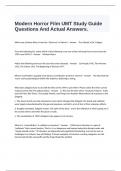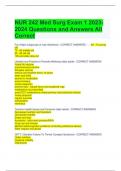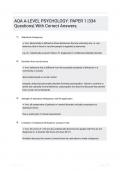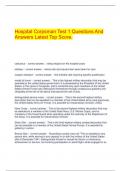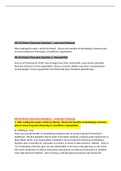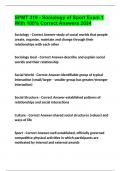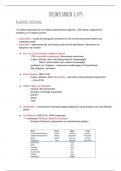Exam (elaborations)
Modern Horror Film UMT Study Guide Questions And Actual Answers.
- Course
- Institution
Which one of these films is from the "silent era" of Horror? - Answer The Cabinet of Dr. Caligary From the following list, select which of the following is not one of the Universal Horror icons from the 1930's and 1940's? - Answer Michael Myers Match the following movies to the year the...
[Show more]
